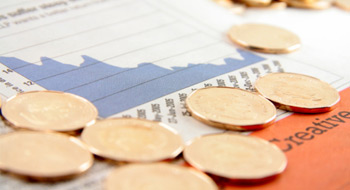

My previous article discussed techniques for monitoring an investment manager’s track record to avoid making poor (and expensive) hire/fire decisions. In that article I also promised to introduce a tool investors can use to avoid hiring investment managers who are likely to underperform.
It’s a mathematical certainty that the average investor in a given asset class will underperform the relevant benchmark after fees and transaction costs are accounted for. However, there are certain types of managers who are more likely to outperform than others. If you are going to attempt to select a manager who can outperform, it would be wise to stack the odds in your favour.
A geologist who is looking for a certain mineral will start their search by looking for certain geologic features that have been shown to indicate the presence of such minerals in the past. It is possible that they could get lucky and find what they are looking for by randomly drilling into the ground without regard to what has been successful before, but the odds will be much better by focusing their effort where the empirical evidence has shown the best results in the past.
To this end, I’d like to now discuss a concept known as “active share,” which is a quantitative measure that can be used to gauge the degree to which a manager’s portfolio is employing active management vis-à-vis a market index.
As Sir John Templeton opined, “If you want to have a better performance than the crowd, you must do things differently from the crowd.” In other words, the only way to outperform is to invest in ways that are different than the benchmark you are measured against and different than most of the universe of peer managers. This makes intuitive sense, but in practice it’s far too often not the reality of how assets are invested.
Many investors are familiar with the term tracking error, which has been used by managers and consultants to measure the level of active management in a fund. Tracking error refers to the volatility of the return differences between a fund and its benchmark. However, tracking error is a blunt tool; for instance, it doesn’t differentiate between benchmark relative volatility created by sector bets (i.e., underweighting/overweighting certain sectors) and stock selection (i.e., actively choosing the perceived “best” stocks within a sector).
As well, similar to the more commonly known standard deviation measure, tracking error treats positive outperformance deviation the same as negative underperformance deviation—a situation which is counter to the reality of most any investor I’ve met, who will usually gladly accept outperformance. Further, there’s little evidence that high tracking-error managers, as a group, are best suited to outperform.
Enter the active share measurement. To conceptualize what active share measures, think of it as the ‘share’, or proportion of the fund, that is different than the benchmark. For instance, a Canadian equity fund with an active share score of 50 would be equivalent of investing $100 dollars in the S&P/TSX Composite Index and a further $50 dollars in the fund’s active long positions (positions that are overweight the benchmark weight) and $50 dollars in the fund’s active short positions (positions that are underweight the benchmark weight).
A passive index fund should have an active share of close to zero while a fund that has no commonality with the index will have an active share of 100. A fund that uses no leverage or shorting cannot have a score greater than 100.
Why am I spending so much time discussing arcane statistics?
It’s because active share has some interesting characteristics according to the observations made by the researches that derived the metric (see Cremers and Petajisto 2009 and Petajisto 2013). In the first paper, the researchers examined the track records of 2,650 funds from 1980 to 2003 and found that the average manager with an active share of 80% or greater outperformed the benchmark by 2%-2.71% before fees and by 1.49%-1.59% after fees.
The fact that managers with a high active share have outperformed the index ties back to my earlier point of tilting the odds in your favour.
This fact is interesting enough, but they also found that there was persistence in the results. In other words, to a certain extent active share could be used to pick managers who would have likely future outperformance. The fact that active share can be used to help select managers who are more likely to outperform makes it an immensely powerful tool for investors.
The 2009 paper only examined data prior to the Great Recession of 2008, but the 2013 paper extends the analysis through the financial crisis to the end of 2009. Even with this added data, the research shows that the best results were garnered by the high active share managers, adding the most value through outperforming their benchmarks, after fees. No other groups of managers were as consistent in producing outperformance on average.
However, as I will show in my next article, most managers do not fall into the high active share category.
